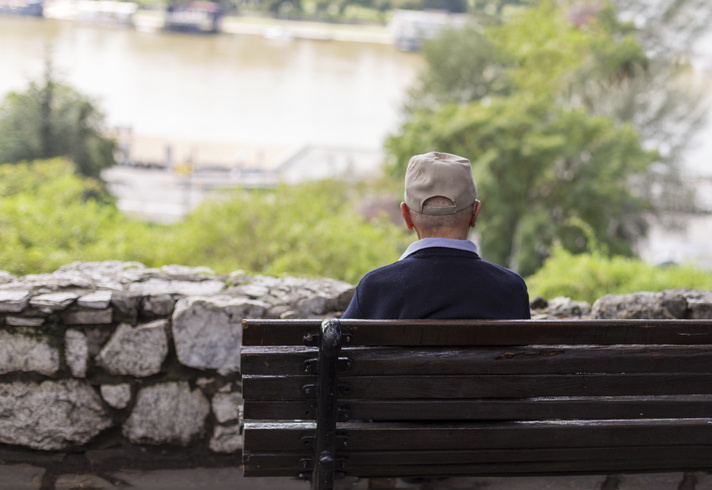Opinion
loneliness
Building community, one intergenerational relationship at a time
In Short
What can we learn from life during COVID to help reduce isolation for seniors and teens as we look forward to brighter days?
…There are two residents who attend very few programs. But they never missed a Better Together in a Box Zoom program. “Whenever the kids were involved, they never missed it,” said the activity director. “Just that, in itself, speaks volumes.”
Jewish Family Experience, Skokie, IL (Midwest NCSY) and
Weinberg Center for Community Living
As we begin to slowly emerge from our COVID realities, and start to tentatively (or energetically, depending on your point of view) go back to our almost-forgotten routines of living out in the open, senior citizens are still at risk. Perhaps, as time goes on, less at risk of COVID, but still at risk of the deleterious effects of loneliness. And professionals working with teens know that teens also suffer from loneliness, and that mental health issues that were on the rise prior to COVID have only become worse.


iStock
According to the CDC, loneliness is not only an emotional problem, but is detrimental to one’s physical health. While this blight has been known to disproportionately affect the senior population, it took a global pandemic for it to be widely acknowledged and recognized, as even active and socially engaged seniors suddenly found themselves isolated. And loneliness hasn’t just affected seniors but seems to have become a defining characteristic of COVID across the generations, with individuals and families becoming islands unto themselves, experiencing waves of longing to see and hug one another.
What can we learn from life during COVID to help reduce isolation for seniors and teens as we look forward to brighter days? One positive lesson emerges from the Better Together program, an intergenerational grant program of a national foundation. When it became impossible to physically bring together teens and seniors in nursing homes, assisted living facilities and synagogues, “Better Together in a box,” was launched to give educators the tools to continue to engage teens, remotely and safely, with the elderly.
We know from the writing and video testimonials of teens and seniors that intergenerational engagement makes a difference in their lives. Not only does it serve to change perspectives of the “other” and dispense with useless stereotypes (e.g. old people are boring, inactive, and irrelevant, and teens are loud, immature, and selfish) but it creates true caring relationships, which is especially important in our culture of isolation and endemic loneliness. As a student from Yeshiva of Flatbush describes it, the “barriers of age difference and experience are shattered and replaced by an understanding of a shared humanity.” An elderly participant from the San Diego Jewish Reconstructionist Congregation and Havurot-Dor Hadash shared that, “we may have differences in years, but we are similar in our need for connectedness.”
Reaching out to the elderly creates a sense of mission and purpose for teens, and seniors develop a sense of caring and responsibility to nurture and mentor “their” teens. It is heartwarming to read essays from teens who start the program thinking they are embarking on a somewhat unpleasant but important task to interact with “old people” and end up finding such joy and support – and true friendship – from the seniors in the program. A twelfth grader from Contra Costa Midrasha expressed, “when I started this program, I thought I was the one who was going to be doing a mitzvah. But now I feel as if every time Hana is the one solving our problems and helping us get through isolation, not the other way around.” It is also important to note that Better Together relationships are framed as a fulfillment and embodiment of Jewish values and that honoring the elderly is a mitzvah, which serves to bring the generations closer to their Jewish roots.
Better Together in a box was implemented this past year in different ways depending on each community’s needs and interests. In some programs, teens and seniors met on Zoom, practicing chair yoga, or learning how to cook their favorite recipes together. In other programs, teens sent care packages each month with heart-felt letters or e-cards with short video vignettes they created. Early in the pandemic, some organizations and their teens organized “drive-by” parades so seniors and their caregivers could feel comforted and know they were not alone. Over 150 Jewish educational institutions signed on this past year to engage in this holy work, which impacted over 2,500 teens and 2,000 elders. It has become a national movement of caring and intergenerational relationship building.
Even as we emerge from the pandemic, the national Better Together movement provides a model and tool for alleviating isolation. Better Together in a box can be implemented virtually, in-person or in a hybrid blend, depending on the situation of each community. Better Together in a box offers program grants of up to $10,000 per year to cover educational programming for teens, intergenerational events and supplies. We have all learned the costs of isolation and we should build on the successful efforts forced on us by the pandemic to reduce isolation. Join the national Better Together movement, and let’s alleviate loneliness together – one intergenerational meeting at a time.
Bess Adler, the director of the Better Together Program, serves as a program officer at Legacy Heritage Fund. To bring Better Together to your community, contact Bess at bettertogether@lhfl.net.












